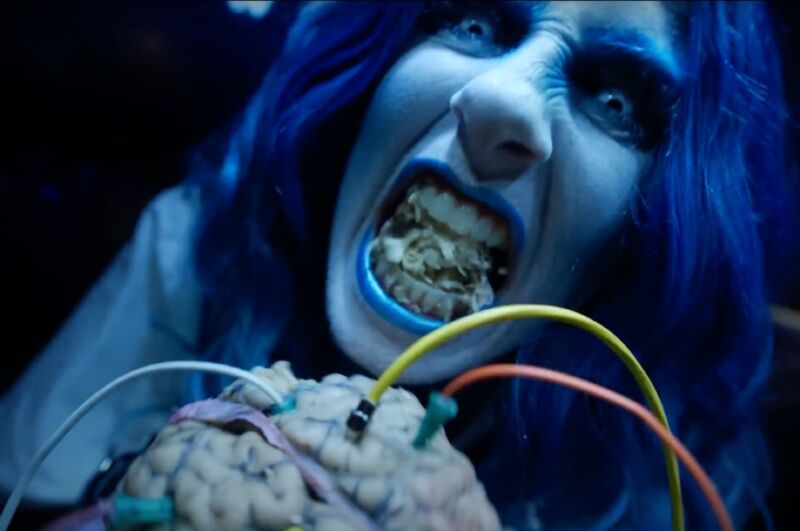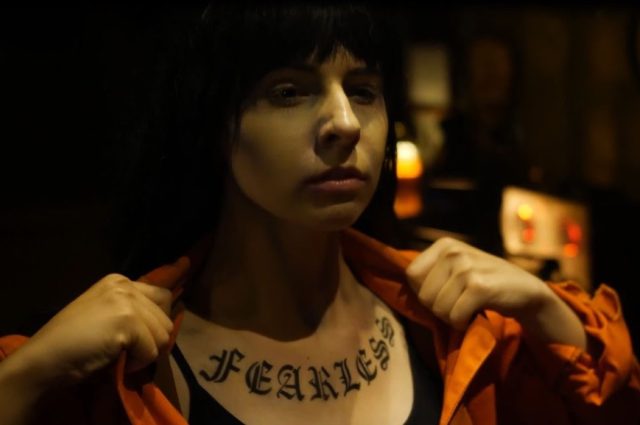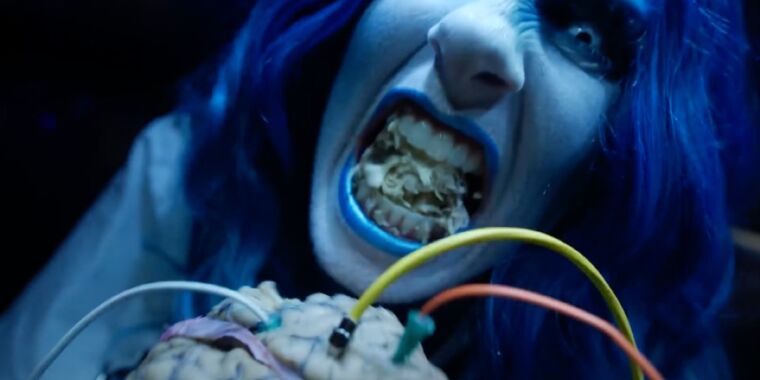
The 17th Door haunted house experience has become a fixture of the annual Halloween fright scene in Orange County, California, attracting thousands of scare seekers since it opened in 2014. And now it’s contributing to science, specifically our understanding of how the human body responds to threats differently depending on certain factors, according to a recent paper published in the journal Psychological Science.
As we’ve reported previously, human beings tend to seek out scary movies, horror novels, or haunted houses—and not just during the Halloween season. This tendency has been dubbed “recreational fear” in the academic literature: a “mixed emotional experience of fear and enjoyment.” This new study focuses less on recreational fear specifically and more on gaining a better understanding of the biological systems that are involved with different fear responses in humans, according to lead author Sarah Tashjian, a postdoc in psychology at Caltech.
Mathias Clasen of Aarhus University, author of Why Horror Seduces, conducted his own investigation of two different fear-regulation strategies employed by subjects participating in a Danish haunted house: “adrenaline junkies,” who lean into the fear; and “white-knucklers,” who try to tamp down their fear. A 2020 study from Clasen’s lab found that the scare factor has to be just right in order to achieve that crucial mixed stated (a “Goldilocks zone” or “sweet spot” of subjective enjoyment). Clasen’s core hypothesis is that horror exploits the evolved fear system.

YouTube/The 17th Door
A 2020 study by Finnish scientists bolstered Clasen’s hypothesis. They used an MRI to map the neural activity of subjects while the subjects watched horror movies: specifically, the 2010 film Insidious and 2016’s The Conjuring 2. They focused on two types of fear: that creeping sense of foreboding in a spooky setting, and the instinctive jolting response we have to an unexpected sudden appearance of a monster or other threat (a jump scare). The Finnish team found that during the former scenarios, there are marked increases in brain activity in terms of visual and auditory perception. In the sudden shock scenarios, there was heightened brain activity in regions involved in processing emotion, evaluating threats, and making decisions, the better to respond rapidly to any perceived threats.
In many ways, a haunted house is the perfect laboratory simulation. “We can’t invite people to the lab, hide behind a cover, then jump out and yell, ‘Boo!'” Clasen told Ars in 2019. It’s unethical, for starters, but also less immersive. And it turns out that immersion is pretty key to generating fear.
Clasen outfitted his subjects with heart rate monitors, while Tashjian’s subjects wore wristbands that measured sweat-induced changes in their skin conduction levels and responses. “We conceptualize our work on fear a bit differently,” Tashjian also said. “Clasen and his lab look at why humans like fear-inducing events like haunted houses and scary movies as a source of entertainment. Our interest in social behavior during a threatening event like the haunted house stemmed from animal work on risk dilution, where animals show a reduction in fear responses if they are in bigger groups. We wanted to test whether the same were true for humans in an intense threat.”

YouTube/17th Door
That said, Tashjian’s study is complementary to Clasen’s 2020 work. “Our data uses electrodermal activity data, which is a measure of sympathetic nervous system activity, while [Clasen and his colleagues] used heartbeat data as a measure of parasympathetic nervous system activity,” she said. “Together, these studies contribute to a more fulsome understanding of stress-related physiology using fear induction than either study alone.” Both studies also combined the objective physiological measures with subjective self-reports of threat arousal and found that human beings (or at least the study subjects) were relatively accurate when it comes to self-reporting their fear-based experiences.
“Our study was developed in response to a growing desire to identify contextual and endogenous factors related to sympathetic nervous system responses to potential threats,” Tashjian told Ars. “This work has both social and clinical relevance for understanding threat responses. For example, anxiety is associated with impaired inhibition of threat responding to safety as well as generalizing threat responses to stimuli that are perceptually similar to threats but are themselves safe stimuli. Our study identifies contextual factors that might exacerbate these processes (i.e., being in groups, unexpected fear events).”
The 17th Door haunted house is the brainchild of a husband-and-wife team named Robbie and Heather Luther, who run a professional production company. As the name implies, there are 17 different rooms, each containing a different kind of scare (or threat, for the study’s purposes). The most recent narrative framework centers on a woman named Paula, an inmate in Perpetuum Penitentiary for the murder of her son. She fights for her redemption against the sadistic warden and associated minions. The entire experience lasts about 30 minutes.








